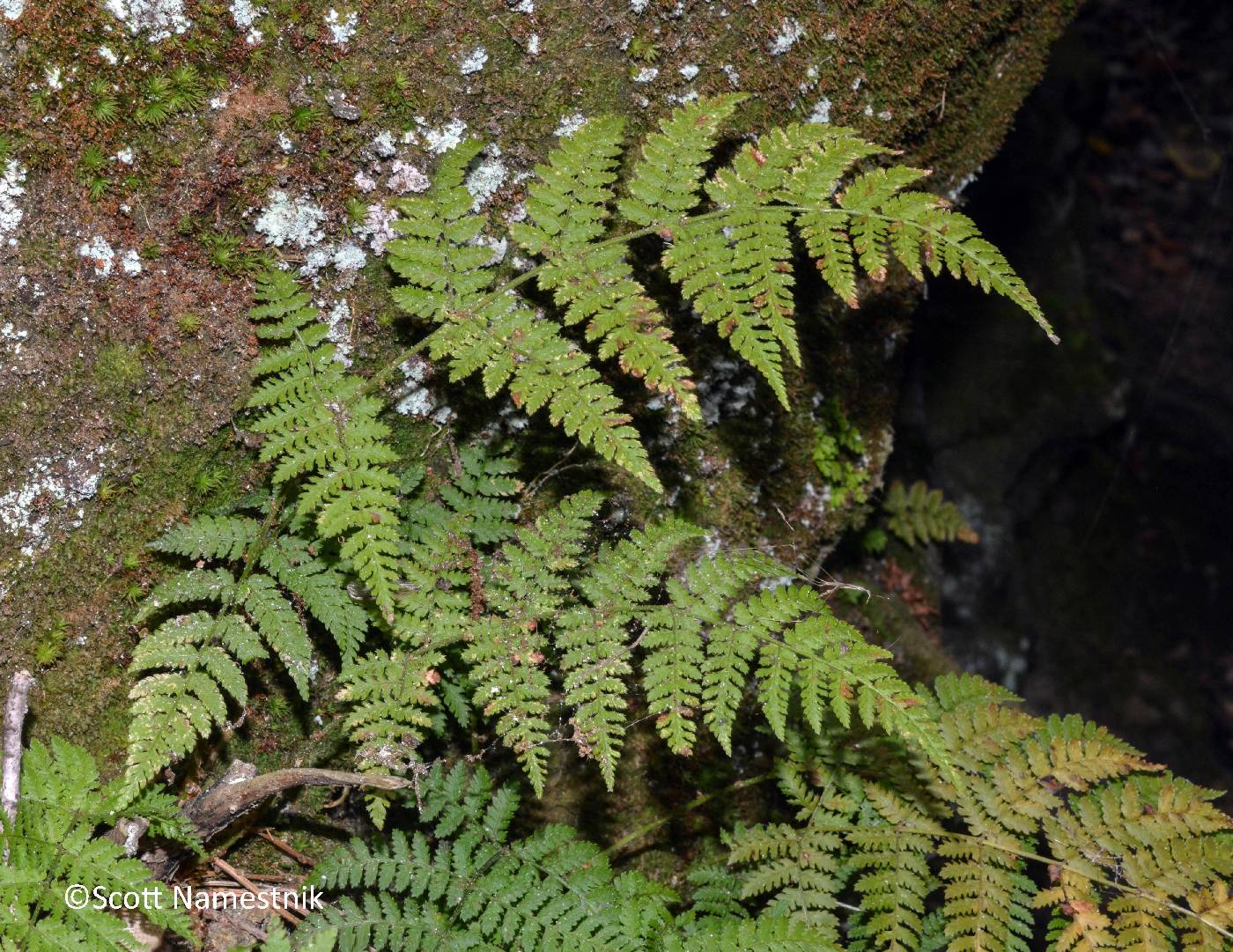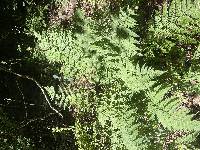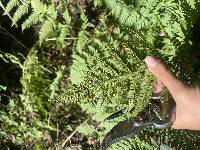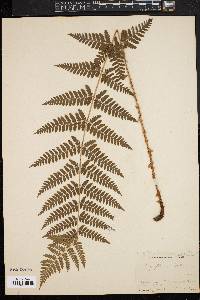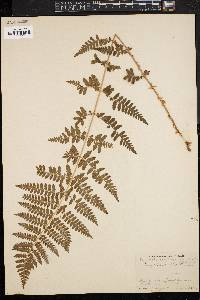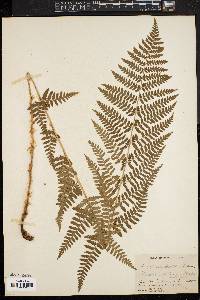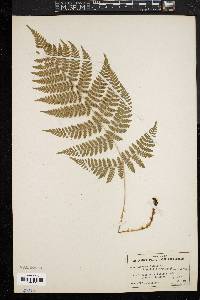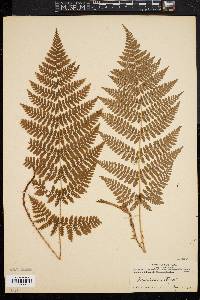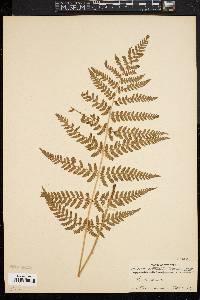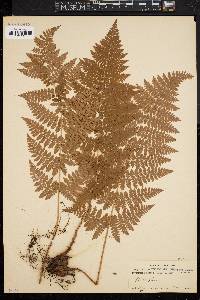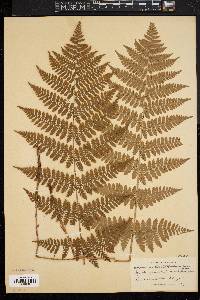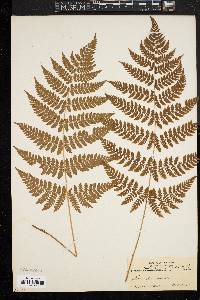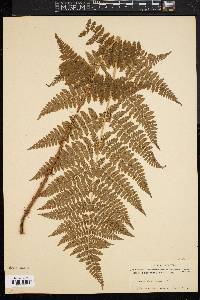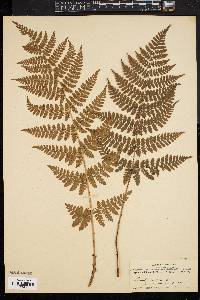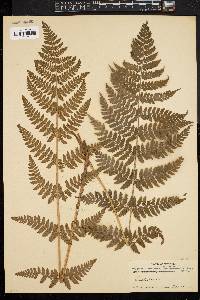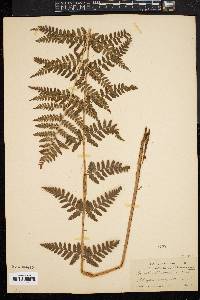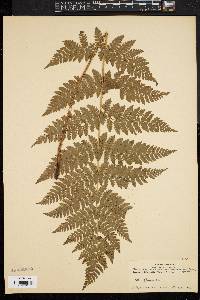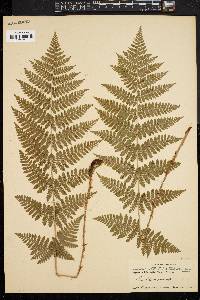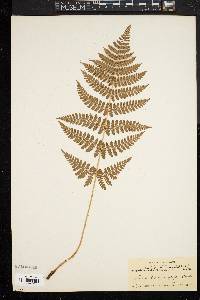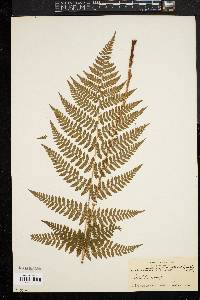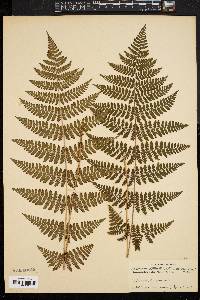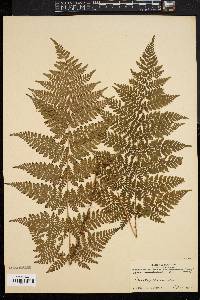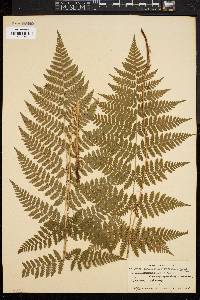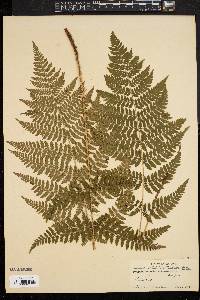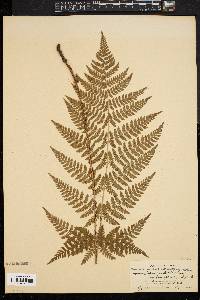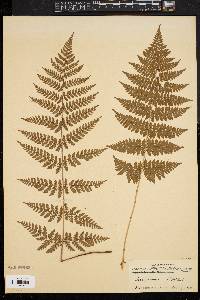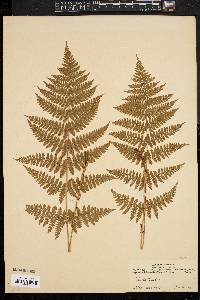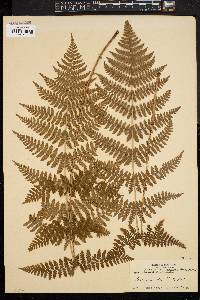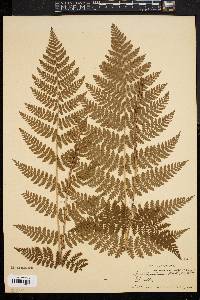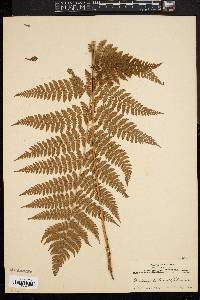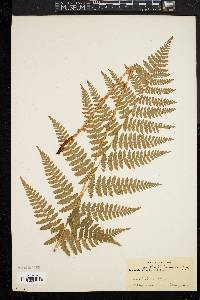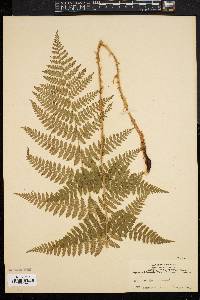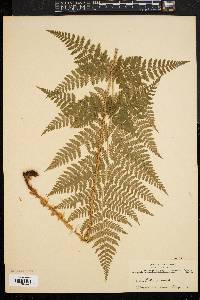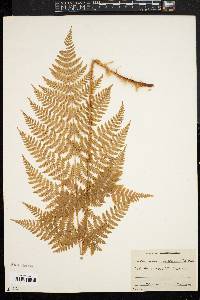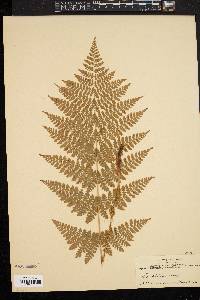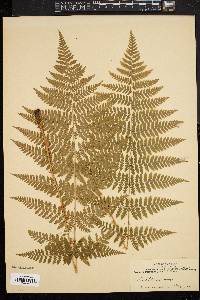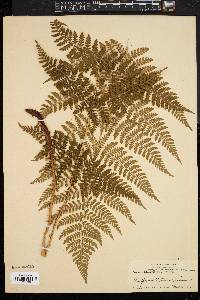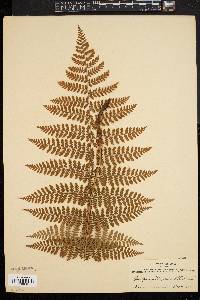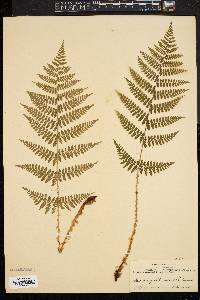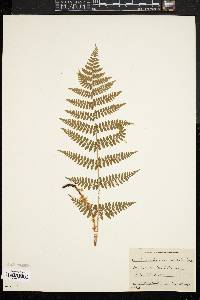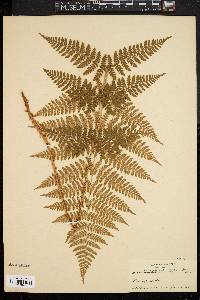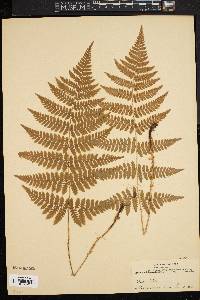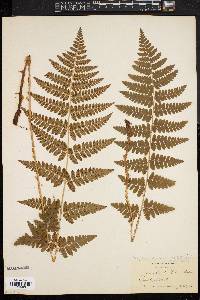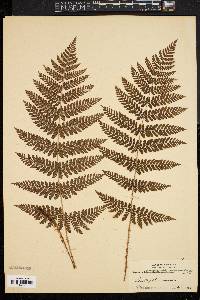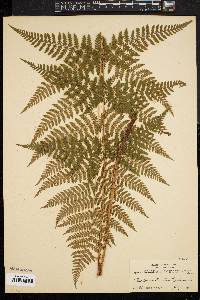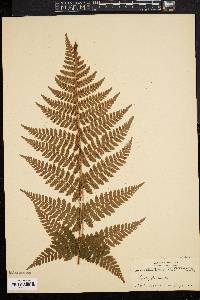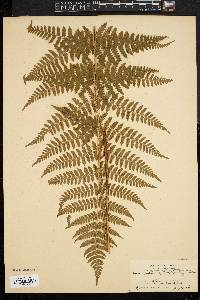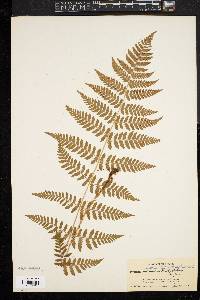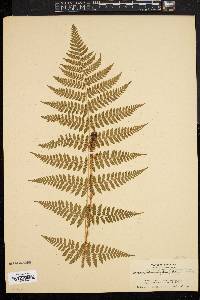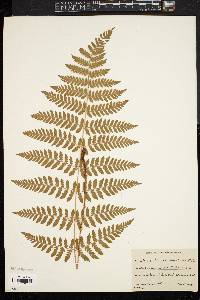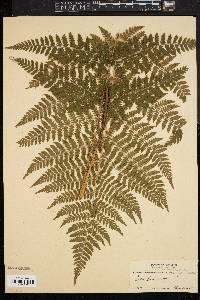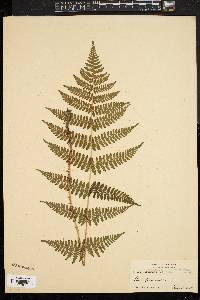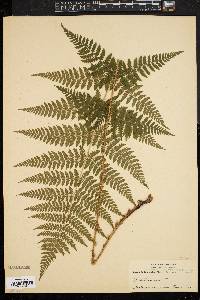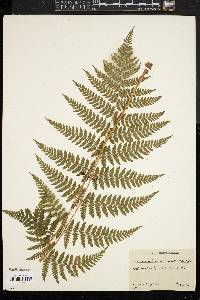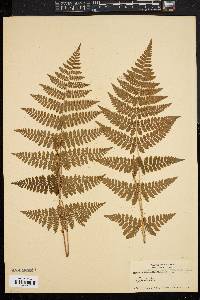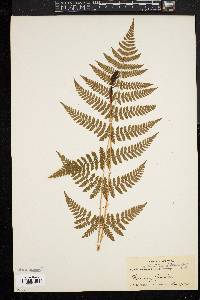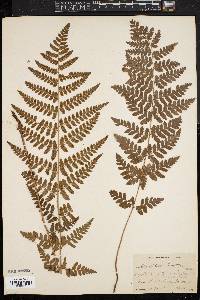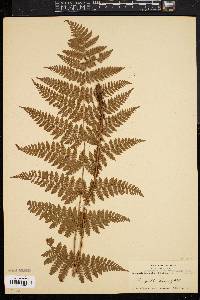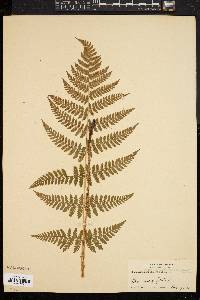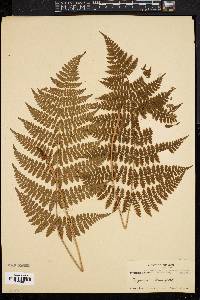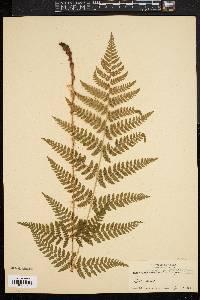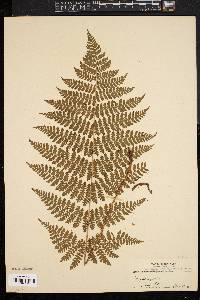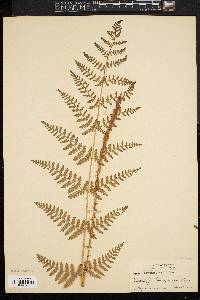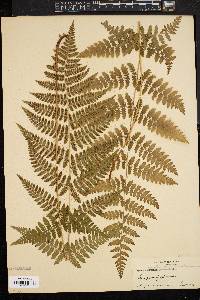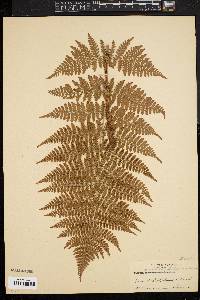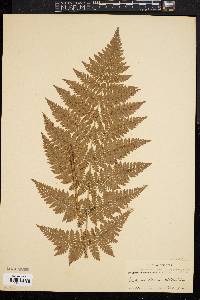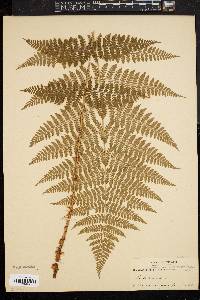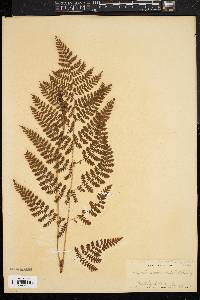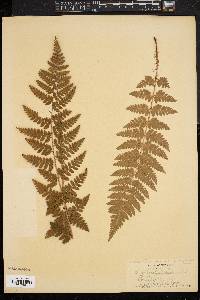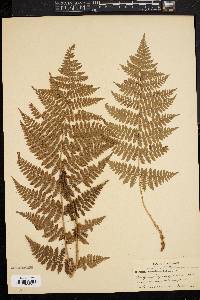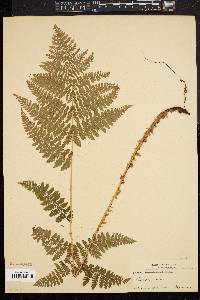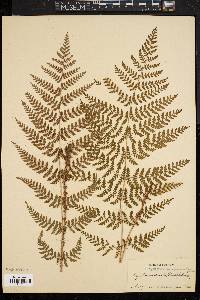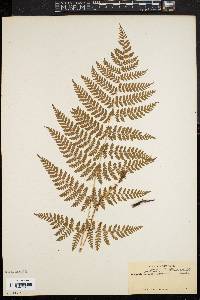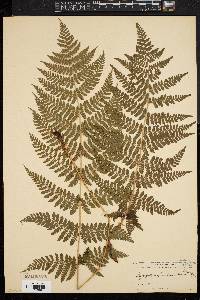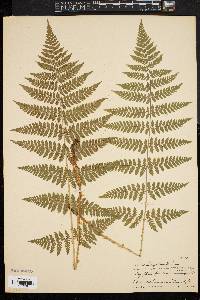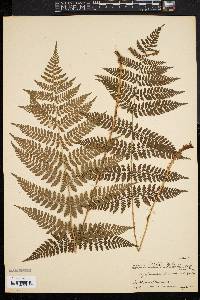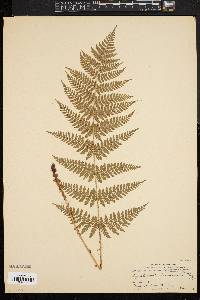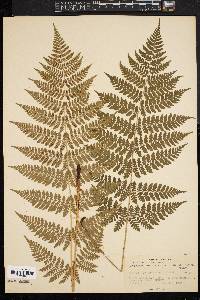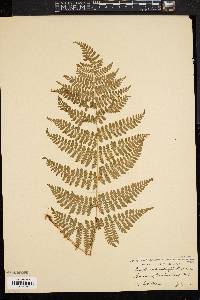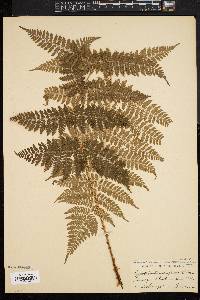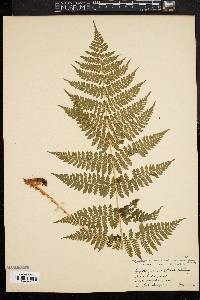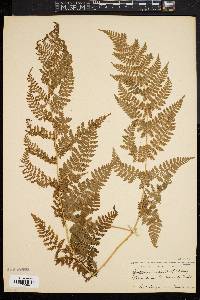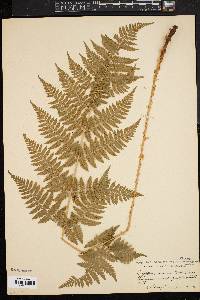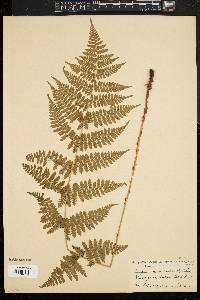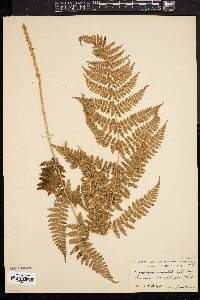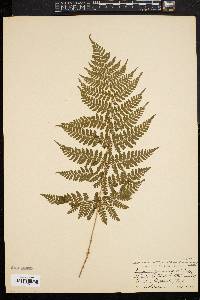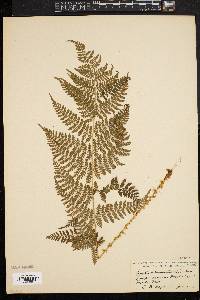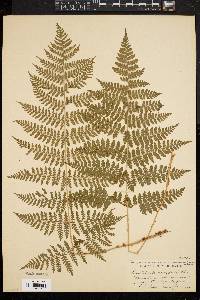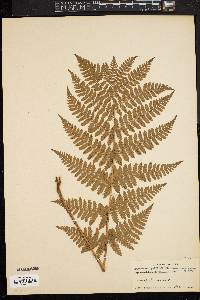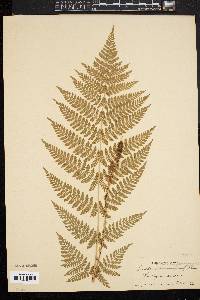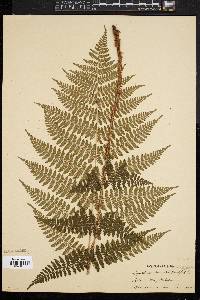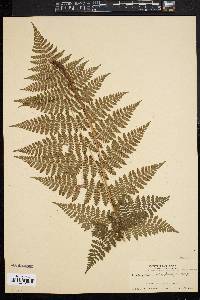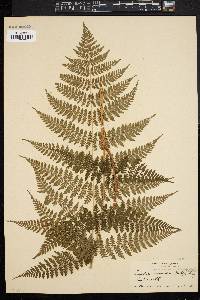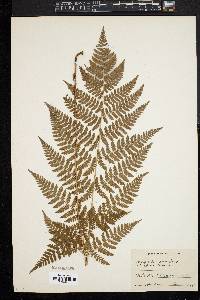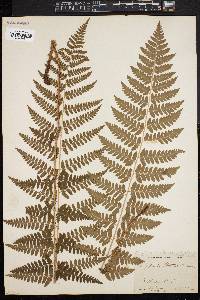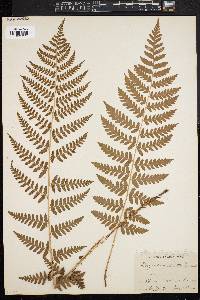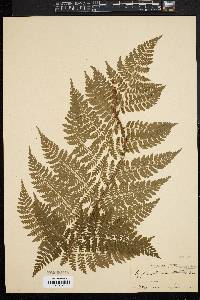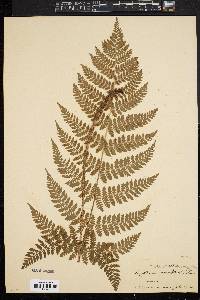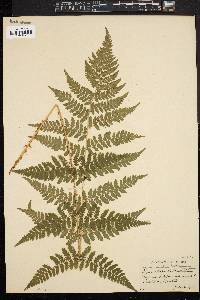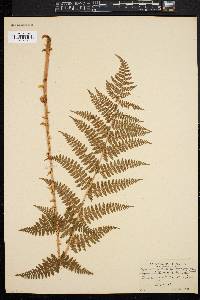
|
|
|
|
Family: Dryopteridaceae
Evergreen Wood Fern, more...intermediate woodfern
[Dryopteris austriaca var. intermedia (Muhl. ex Willd.) Morton, moreDryopteris spinulosa var. intermedia (Muhl. ex Willd.) Underw., Thelypteris intermedia (Muhl. ex Willd.) House] |
Leaves monomorphic, green through winter, 32--90 × 10--20 cm. Petiole 1/3 length of leaf, scaly at least at base; scales scattered, tan. Blade green, ovate, 3-pinnate-pinnatifid, herbaceous, glandular. Pinnae ± in plane of blade, lanceolate-oblong; basal pinnae lanceolate, not reduced, basal pinnules longer than adjacent pinnules, basal basiscopic pinnule longer than basal acroscopic pinnule; pinnule margins serrate, teeth spiny. Sori midway between midvein and margin of segments. Indusia with minute glandular hairs. 2 n = 82. Moist rocky woods, especially hemlock hardwoods, ravines, and edges of swamps; 0--2000 m; N.B., Nfld., N.S., Ont., P.E.I., Que.; Ala., Conn., Del., Ga., Ill., Ind., Iowa, Ky., Maine, Md., Mass., Mich., Minn., Mo., N.H., N.J., N.Y., N.C., Ohio, Pa., R.I., Tenn., Vt., Va., W.Va., Wis. A related taxon, Dryopteris intermedia subsp. maderensis (J. Milde ex Alston) Fraser-Jenkins, occurs on eastern Atlantic islands. Perennial fern 30 - 90 cm tall Leaves: clustered, stalked, evergreen (green even in winter), 20 - 50 cm long, 10 - 20 cm wide, egg-shaped in outline, but pinnately compound twice except for very tip where only deeply pinnately lobed. The leaves are typically hairless on the upper surface, but glandular and sparsely scaly on the lower side. Main "midrib" (rachis) with lengthwise groove on upper surface. Rhizome: short-creeping to erect, scaly. Leaf stalks: 10 - 30 cm long, with many scattered tan scales at base. Spores: 64 per sac, brownish, all of one kind, single-sectioned (monolete), oblong or kidney-shaped, and coarsely wrinkled or with folded wings. The spores give rise to the gametophyte (the sexual phase of the plant), which is small, green, heart-shaped, hairless or often with glands or hairs, and sits above the ground. Similar species: Dryopteris intermedia is probably most similar to D. carthusiana, but that species does not have glands on the leaves or flaps of tissue over the spore clusters (indusia), and the lowermost final leaf divisions (pinnules) of the lowest main divisions (pinnae) are longer than the ones next to them. Also incredibly similar is the hybrid between these two species, D. x triploidea, which is very similar to, and intermediate between both parent species, but produces misshapen spores that are infertile. Other hybrids between D. intermedia and other species, including D. x boottii, will likewise produce infertile and misshapen spores. Our remaining species of Dryopteris differ from D. intermedia by having leaves that are normally only pinnately divided once with the main divisions (pinnae) only further deeply pinnately lobed, not again pinnately divided, plus the final segments are not spine-toothed. Habitat and ecology: Somewhat common in the eastern Chicago Region counties in rich mesic woods, but quite rare in the western counties. Occurence in the Chicago region: native Notes: This species has been known under several names including D. spinulosa var. intermedia, D. austriaca var. intermedia, and Thelypteris intermedia. This species does commonly hybridize with several species, including D. carthusiana, which has been reported in several Chicago Region counties. This hybrid has been named D. x triploidea, but some have called it D. spinulosa var. fructuosa. Other hybrids include D. x boottii (cross with D. cristata), D. x dowellii (cross with D. clintoniana), and D. x separabilis (cross with D. celsa). The sterile hybrids can be separated from the fertile parent species by the presence of misshapen spores and intermediate characters in leaf morphology. Author: The Field Museum Rhizome ±ascending or erect; lvs evergreen; petiole, rachis, costae, and indusia bearing minute stalked glands; petiole 1-3 dm, its broad, pale brown scales with an irregular darker area; blade 2-5 נ1-2 dm, broadest just above the obtuse base, abruptly tapered below the acuminate tip, bipinnate-pinnatifid to tripinnate-pinnatifid, the lowest pinnae usually with the lowest pair of pinnules shorter than the next pair, the lowest basal pinnule only slightly or not at all larger than the subopposite acroscopic one, the ultimate segments finely spinulose-toothed; sori midway between the midvein and the margins of the ultimate segments; 2n=82. Moist woods and swamps; Nf. to Ga., w. to Minn. and Ark. (D. austriaca var. i.; D. spinulosa var. i.) Gleason, Henry A. & Cronquist, Arthur J. 1991. Manual of vascular plants of northeastern United States and adjacent Canada. lxxv + 910 pp. ©The New York Botanical Garden. All rights reserved. Used by permission. From Flora of Indiana (1940) by Charles C. Deam I have only a few specimens of this fern although it has been reported from 10 counties not shown on the map. It has a wide distribution in the state and seems to favor wooded ravines. ...... Indiana Coefficient of Conservatism: C = 10 Wetland Indicator Status: FAC |

